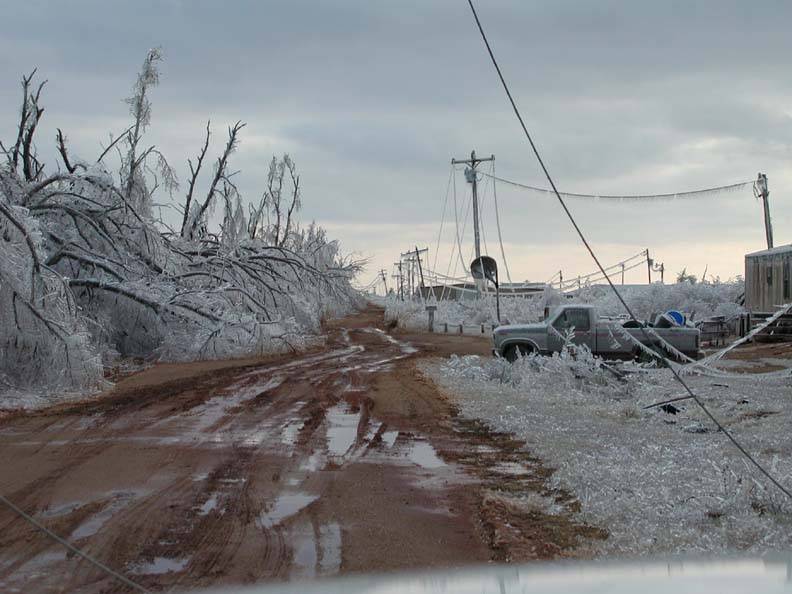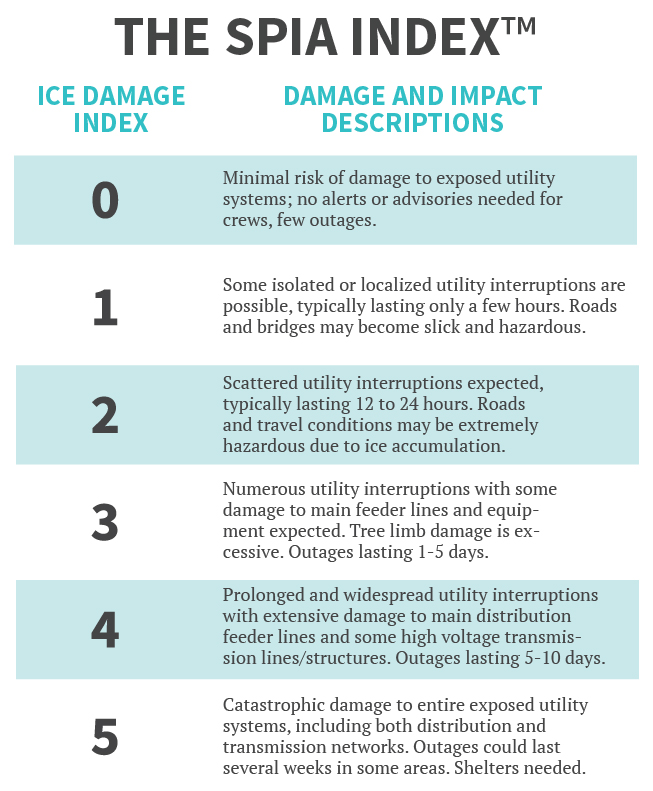
A forecasting tool developed with a lot of electric cooperative input is helping utilities and public works departments respond to ice storms more quickly and effectively.
The Sperry-Piltz Ice Accumulation Index fuses National Weather Service forecast data with the operational experience of electric and telecommunications utility professionals to predict potential risks from ice-related service issues or transportation hazards.
“This is impact-based forecasting that can be used for advanced preparations for damage from ice, heavy wet snow and high winds,” said Sid Sperry, director of public relations, communications and research for the Oklahoma Association of Electric Cooperatives and co-developer of the SPIA Index. He began working with Steven Piltz, a National Weather Service meteorologist in Tulsa, in December 2006 after two major ice storms hit the Oklahoma Panhandle within a week.
Within months, they created an impact scale to predict the scope of damage on utility infrastructure, based on local weather forecasts. With co-op help, they’ve continued to improve it.
“We’re now achieving accuracy rates of 80 to 85 percent based upon validated weather forecasts,” said Sperry.
Data used for the index interprets projections of rain, snow, freezing rain and sleet differently, and that’s reflected in color-coded maps supported by weather service information.

“The impacts of sleet and freezing rain on utilities lines are like night and day. Getting accurate forecasts of just the glaze of ice is the key to anticipating the problems with ice storms,” said Piltz.
Hundreds of individual co-op operations managers have used the SPIA Index, and at least a dozen statewide associations use it to plan mutual aid.
“A lot of planning and coordination is needed when we ask for linemen to leave their families to come restore power in inclement weather,” said John Dvorak, safety director of the Iowa Association of Electric Cooperatives.
In January alone, information gleaned from the SPIA Index was used before three major ice storm events in northern Georgia, said Harry Reeves, vice president of training, education and safety for Georgia Electric Membership Corporation.
“When you know where the ice line is likely to hit, you can make arrangements to draw crews from areas expecting nothing more than rain,” said Reeves. “You can also rearrange your operations schedule so that an affected co-op’s own crews are rested and ready to work extended shifts once restoration work begins.”
Display technology improvements and refinements of weather service forecast models are making the SPIA Index even better. In some cases, it’s provided advance warnings of icing events over portions of an individual co-op’s service territory.
“As a preparedness tool, the more frequently you use it, the more potential you see in its capabilities,” said Joe McElroy, director of safety for the Michigan Electric Cooperative Association. “People are not only using it for ice forecasting, but they’re also using it to prepare for construction and maintenance projects where wind speeds can affect safety and operations.”
Sperry is expanding the use of the SPIA Index by collaborating with companies specializing in weather and climate forecasting.
“Their plans are to expand upon alerts and notifications to utilities that they work with and to provide customized geographic data files with SPIA Index overlays onto local utility system maps,” said Sperry. He added that they also are working to incorporate SPIA Index data into utility outage display maps accessible to members.
Derrill Holly is a staff writer at NRECA.